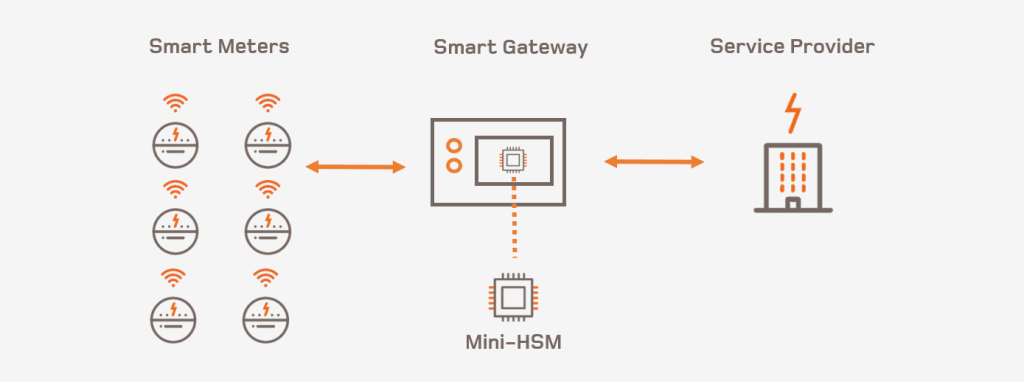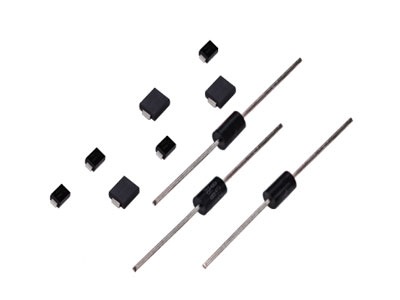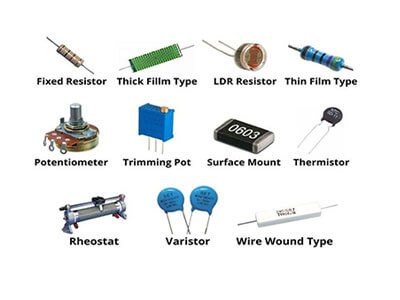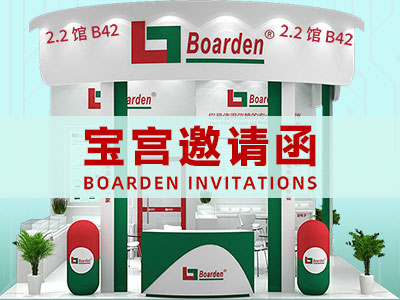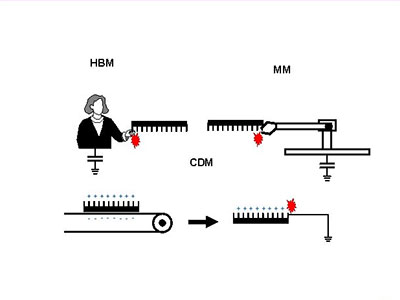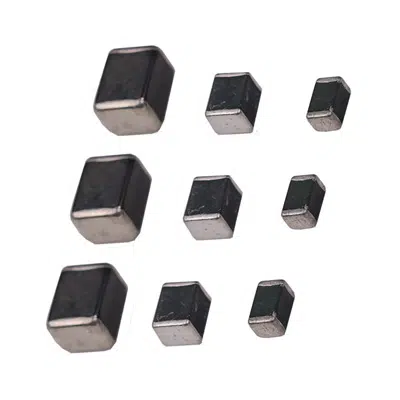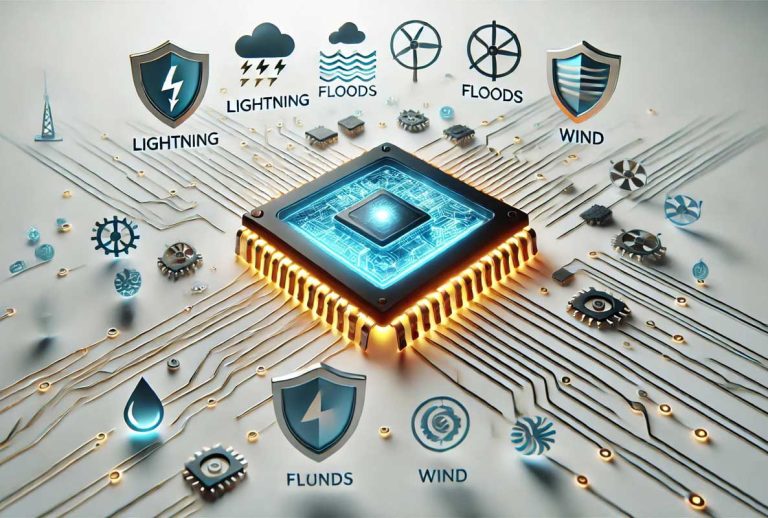With the rise of smart grids and automated metering infrastructure, smart energy meters have become indispensable devices in modern power distribution systems. Compared to traditional mechanical meters, smart meters are more complex, integrating multiple functional modules such as microprocessors, metering chips, communication modules, power conversion, and control outputs. These modules require significantly enhanced protection against electromagnetic interference (EMI) and surge threats.
Lightning surges, power transients, electrostatic discharge (ESD), and overvoltage events are the most common transient interferences encountered in real-world smart meter applications. Inadequate protection can result in communication failures, inaccurate metering, or even controller damage, affecting the overall reliability of data acquisition in power grids.
1. Common Interference Types
Lightning Surges
Lightning-induced surges can couple into the meter through power lines, signal cables, or grounding paths. Power ports typically experience a combination surge waveform of 1.2/50µs voltage and 8/20µs current, while communication ports are subjected to 10/700µs voltage and 5/320µs current waveforms. Surge protection design should match the characteristics of each port.
Electrostatic Discharge (ESD)
ESD events often occur during manual operations, terminal connections, or enclosure installation. Although ESD carries low energy, its high voltage can easily damage sensitive ICs like high-speed transceivers, MCUs, or unisolated signal ports. IEC 61000-4-2 mandates contact discharge up to ±8kV and air discharge up to ±15kV.
Power Transients and Overvoltage Events
This includes both microsecond-level transients (e.g., EFT bursts) and millisecond-level line overvoltages. TVS diodes or MLVs are suitable for fast transient suppression, while longer-duration overvoltage events should be addressed with MOVs combined with thermal fuses to prevent device overheating.
Relay-Induced Back EMF
Relays are commonly used for load switching in smart meters. When opened, the stored energy in the coil releases high dv/dt and di/dt pulses, which can backfeed into the control circuit. Dual-direction TVS (e.g., SMBJ58A) or RC snubbers should be used across relay coils, and series resistors can limit di/dt at the control pin.
Communication Line Disturbances (RS485 / PLC)
Signal coupling, long cable runs, and shared ground systems can introduce crosstalk or common-mode voltages that disturb transceiver operation. Use TVS devices with <10pF capacitance and series resistors (22~100Ω) to dissipate surge energy and maintain waveform integrity.
2. Core Protection Design Modules
1. AC Input Protection (Against Lightning and High-Energy Surges)
AC input ports should adopt differential and common-mode surge protection. MOVs are used to absorb differential surges, while GDTs clamp common-mode voltages. Combined with CM chokes and π-filters, immunity can be enhanced. Keep GDT and TVS spacing >10mm to avoid energy reflection.
2. Power Module Protection (Against Transients and Overvoltage)
AC-DC and DC-DC input circuits should use ultra-fast devices like TVS or MLVs (response time <1ns) to suppress voltage overshoot. For unstable grid conditions, RC snubbers and X/Y capacitors are also helpful in absorbing transient spikes.
3. Communication Port Protection (RS485 / PLC)
Design must comply with IEC 61000-4-2 and -4-5. A 3-stage structure using TVS arrays, series resistors, and common-mode chokes is recommended. For PLC ports, use TVS with <10pF capacitance and matched impedance via frontend resistors to prevent data distortion.
4. MCU & Metering Circuit Protection
Protect MCU I/Os, analog front ends, and sampling pins from voltage transients using low-capacitance TVS arrays. Add RC filtering and PCB trace isolation to reduce EMI. VDD rails should also include pull-up TVS or similar transient protection.
5. Relay & Output Control Protection
Relay coils are high-risk surge zones. Use dual-direction TVS (e.g., SMBJ58A) across the coil, series resistors on the control line, and optionally RC snubbers to reduce residual voltage and prevent MOSFET breakdown.
3. Design Recommendations
- Component Selection: Match device specs with response time, clamping voltage, leakage current, and capacitance to avoid compatibility issues.
- Distributed Multi-Stage Design: Let the first-stage GDT discharge >80% energy, with the TVS handling the clamping function. Ensure proper spacing and coordination.
- Whole-System EMC Validation: Include IEC 61000-4-2 (ESD), -4-4 (EFT), and -4-5 (Surge) tests during prototype validation.
- PCB Layout Practices: Place protection devices near surge sources. Use short, thick ground returns (<10mΩ) and avoid poor solder joints.
4. Relevant Standards and Protection Requirements
- IEC 61000-4-2: Requires ±8kV contact discharge and ±15kV air discharge. Use low-capacitance TVS on external ports, and ESD shielding on exposed metal parts.
- IEC 61000-4-4: EFT immunity up to 4kV. Use ferrite beads, filters, and RC snubbers to suppress fast pulses.
- IEC 61000-4-5: Surge immunity up to 6kV/3kA for power ports; 10/700μs waveform for communication ports. Differential mode = 4kV; Common mode = 6kV.
- GB/T 17215 / DL/T 645: China standards specifying lightning, power disturbance, and communication immunity test requirements.
Design protection with a safety margin beyond standard levels to ensure production consistency and export compliance.
Facing challenges like harsh outdoor EMI, complex communication schemes, and tightening global standards, smart meter protection design must be scientifically planned and rigorously implemented. Any neglected interface may become a system vulnerability.
Boarden has been dedicated to smart meter and energy terminal protection solutions for years. We offer full-spectrum protection strategies covering AC input, power modules, communication lines, and MCU interfaces. Contact us for detailed application guides or device selection support.
